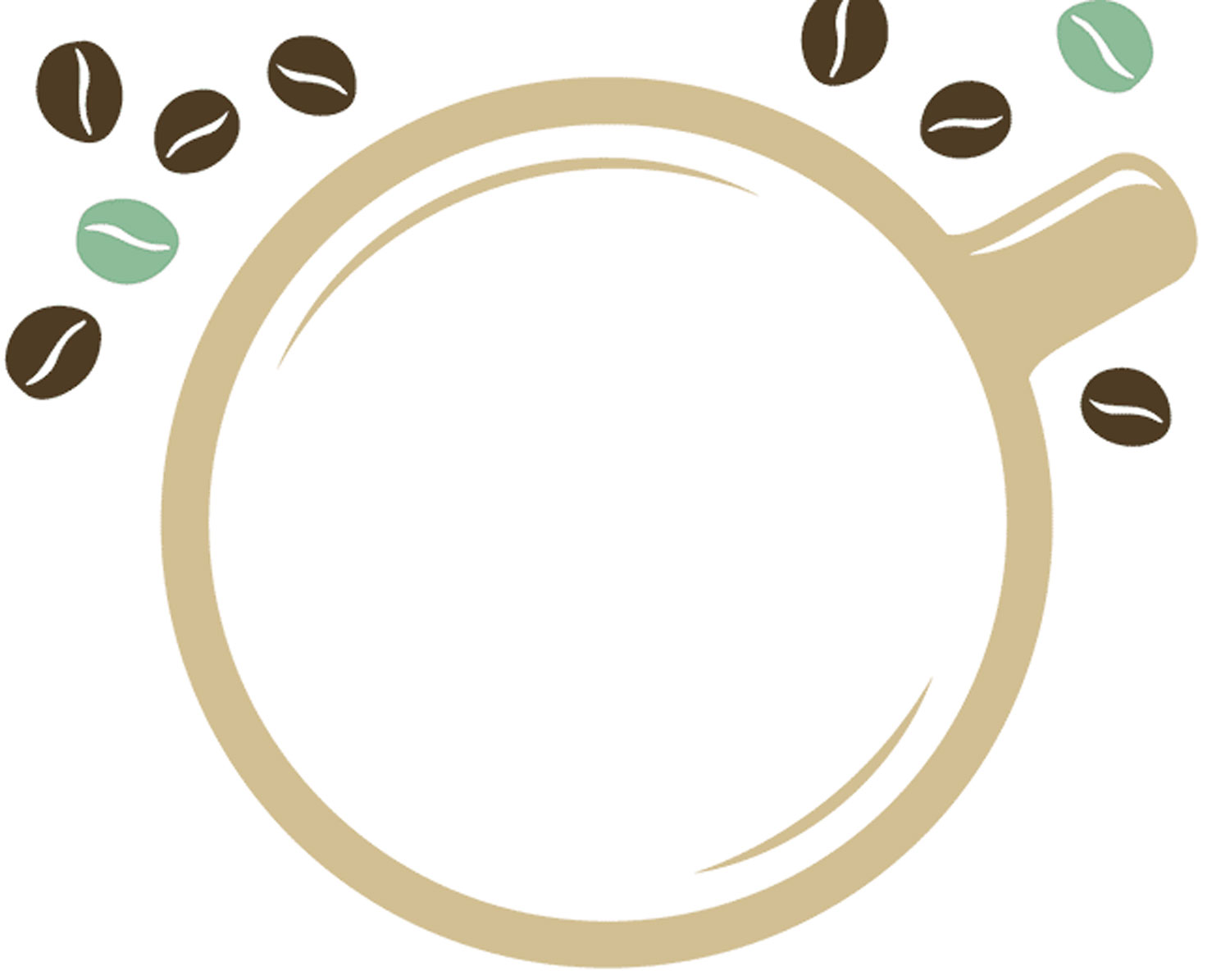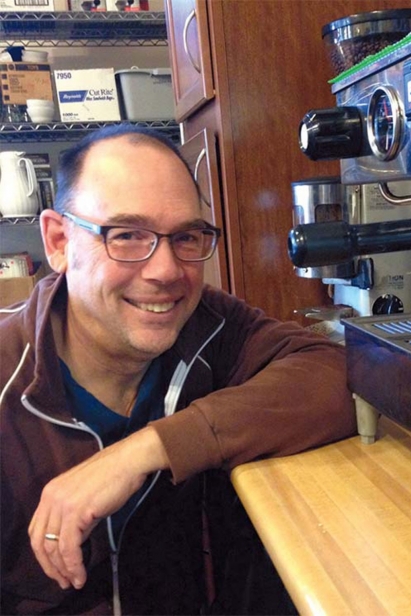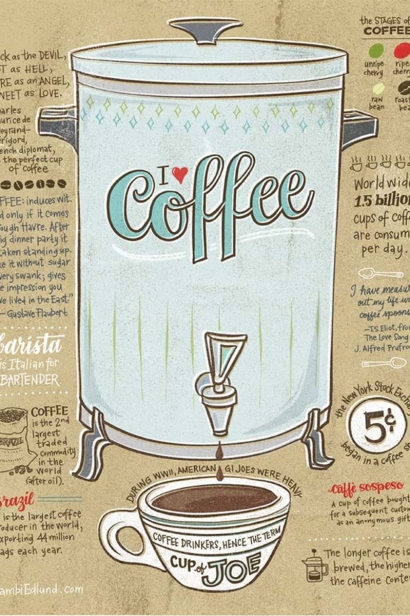Coffee Roasters are Bringing the Flavor Home
APPARENTLY, IT TOOK A FEW YEARS TO GET THE BEAN PAST YEMEN
Coffee is a small thing to savor — whether crouched over a fire in a remote village or in a bustling city cafe. An exceptional brew is that much easier to find now with local coffee connoisseurs roasting beans daily.
From Luna Coffee Roasters in De Pere to Uncommon Grounds Specialty Roaster in Appleton and Door County Coffee & Tea Co. in Carlsville, they wholesale and retail their freshly roasted beans to grocers and restaurants throughout our area. Each are as close to being locally sourced as a coffee bean can be, providing that wow! factor in a treasure trove of locations.
Each bean has made quite a trip before finding its way into a coffee pot here in Wisconsin.
All coffee originated from Ethiopia where, according to one account, it was discovered around 600 A.D. The seed was removed from the pit, roasted, ground, and then brewed much like tea. Originally it only got as far as Yemen, according to Mark Patel, owner of Luna, who said at that time, tea was the mainstay.
Coffee became such a sought-after commodity, growing only in the wild that it was prohibited from leaving Yemen unless it was already ground.
“A pilgrim smuggled a few beans to India taped to his chest and he planted those seeds in India,” Patel said. Later the coffee bean found its way to Indonesia and eventually spread.
Patel understands the ritualistic nature and importance of coffee from his early upbringing in the ceremonious way tea was prepared in his family.
With his mother from Britain and his father from India he was raised as a tea drinker. It wasn’t until his college days in Milwaukee when he started working for Alterra that coffee became his mainstay. As a result of that early upbringing, Luna has an array of more than 50 quality loose teas as well as coffee.
Alterra was where Patel met his life partner, Angela Luckenbill, who was managing cafes in the Milwaukee area. Angela’s family is from Green Bay and after the couple married, decided to move to a smaller town to raise a family. They have been in the same location in De Pere for the past 15 years.
Besides blending coffee, Patel also blended his interests in film and English literature, working with concerts and film festivals at Luna Cafe.
AN ENGLISH MAJOR COMES IN HANDY
Daniel Gould, who roasts coffee daily at Uncommon Grounds in Appleton, understands that connection.
“You have to be an English major to be in the coffee business because there are a lot of adjectives to describe it,” quipped Gould.
Not only is coffee a “community experience” drinking it, but getting it to market is also a community production.
Most comes from a coffee belt within 15 degrees of the equator with the Arabica style grown in high elevations of volcanic soil in remote areas. Most crops come from thousands of farmers with small parcels who bring it to a mill down a mountainside.
Both local roasters buy organic, fair-traded beans, but not all the farms are certified because many small farmers do not go through the expense of certification.
“We pay above fair-trade price,” Patel said. “That means we are buying the most recent crops our brokers can give us and we know we’re paying a fair price, not by certification methods, but by price. Some small farms will not certify because of the expense even though they are fairly traded and organic.”
Roasters like Gould and Patel work with importers who in turn have relationships with growers.
Beans are rated and coffee is “cupped” by tasters and scored by a panel of judges for a representative sample from a crop sold through coffee brokers. Gould said the importer traces all shipments and stands by his sourcing. Small farmers produce about 70-80 percent of the world’s coffee, he said, and most are women. Coffee beans start out as seeds inside what is known as a coffee cherry that is red and looks like a cherry and likewise grows on trees. Picking Arabica beans is done by hand in remote, mostly volcanic mountainsides.
The other major type of coffee is called Robusta, a less costly bean with a higher caffeine content that can be grown at lower altitudes and serves the commercial and institutional markets. Robusta beans and their offshoots can be grown in countries on a larger scale on flatter terrains. Brazil is the number one coffee producer worldwide, Gould said, with Vietnam second.
Neither Gould nor Patel flavor their coffees.
“Our Christmas blend will not have peppermint or something like that,” Patel said.
Flavored coffee is a specialty of Door County Coffee & Tea Co. in Carlsville where Vicki Wilson has been roasting coffee for more than 20 years. Wilson uses Arabica beans and roughly half of her roasts are flavored blends. She also provides freshly roasted coffee throughout our area, both wholesale and retail, in her cafe and by subscription at www.doorcountycoffee.com.
“We take the best beans and use the best flavoring,” said Wilson, who has seen the demand for her flavored coffees grow since the company was founded in 1993. She started with holiday flavors before adding a fall selection and has since introduced spring flavors.
“Each is limited time only,” said Wilson. “We have people tell us they can’t wait for a particular season to come out.”
THE DIFFERENCE IS IN THE BEANS
The difference in coffee begins with the beans, similar to how we think of grapes.
“Wine grapes are different than juice grapes,” Gould said. “The change in climate makes a big difference in the quality.” Coffee on the shelf of grocers, even if the quality of bean is high, has likely been there at least four-to-six weeks, he said.
“Fresh is key,” Gould said. “The closer you are to the market the better.” Roasters recommend using coffee within 7-10 days after beans are roasted to ensure peak flavor, which is why most beans are sold in small packages. Grinding beans oxidizes the aroma and depletes the carbon dioxide inside the bean–ground coffee may be handy but already ages the coffee.
Small-batch roasting at Luna begins with green coffee beans poured from bags that arrive on pallets from around the world — mostly Central America (Guatemala, Honduras, Costa Rica), but also South America, Africa, Indonesia or Bali.
“We get a wide range for blending,” Patel said.
Their house blend, a Central American coffee, is always their top seller.
“Coffee is a crop, so it’s seasonal,” he said. “We work with multiple brokers but try to keep it consistent from year to year.”
Consumers sometimes forget coffee is an agricultural crop that changes from season to season and climate and temperature will affect the flavor. As the beans first come in from each country, Patel will pick and choose, and then contract out for one year (there is one major crop a year).
“We try to keep a consistent profile,” he said. “We do a Humane Society blend and another for Hinterland Brewery so we need to keep a consistent flavor profile. Depending on what kind of growing season there is, we may need to source it from a different country. It’s a lot like wine that way — a vintage from year to year will be different.”
Currently, the market is stable but it fluctuates: anticipation of bad weather can drive up price.
Since opening Luna, Patel is aware of the seasonal nature of the coffee business as he always worked with local farmers. Luna’s eggs, honey, maple syrup and as many other products as possible are grown locally. “It’s become a trend but we’ve always been doing it just because I think it builds a strong community,” he said.
Gould, who had been working on the West Coast, moved back to the Appleton area with his family and opened Uncommon Grounds in July of 2013. He found a 30-pound roaster.He roasts 20-25 pounds at a time or roughly 200 bags on a typical day.He does production roasting, supplying nine grocers in the New North, a marketing and economic development organization serving 18 Northeastern Wisconsin counties.
“Imagine a dryer that is turning and a furnace blowing hot air in the center of that drum,” he said describing the roaster.
It takes 12-to-15 minutes to roast the beans, which are then dumped onto a cooling tray that cools the beans quickly. About 15 percent of the bean is roasted off by evaporation (the darker the roast, the more moisture and caffeine is removed). During that time, the coffee bean expands to almost twice its size.
Both Gould and Patel do sample brews and coffee tastings with various organizations and events (much like wine tasting) to allow patrons a first hand look at how their blends are created and teaching flavor aspects. Do either have a personal favorite?
“That’s like asking a parent which child they like best!” said Gould, who prefers bolder tastes — Sumatran if he had to choose but said there are some he has not tried (some high level beans sell for $100 a pound).
Patel said, “I like them all!” but if he had to choose would opt for Central American.
“There really is a good cup of coffee out there,” Gould said.
Luna, Door County Coffee & Tea and Uncommon Grounds are making it easier to find.










